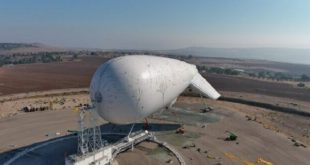DUBAI, United Arab Emirates (Dispatches) — The top U.S. Navy official in the Mideast said Sunday his forces had a “healthy respect” for both Iran’s regular navy and the naval forces of the Islamic Revolution Guards Corps (IRGC).
Vice Adm. Sam Paparo, who oversees the Navy’s 5th Fleet based in Bahrain, said America has reached an “uneasy deterrence” with Iran after months of regional attacks and seizures at sea, even as tensions remain high between Washington and Tehran over the U.S. administration’s hostile policies.
“We have achieved an uneasy deterrence. That uneasy deterrence is exacerbated by world events and by events along the way,” the vice admiral said.
Paparo struck an academic tone in comments to the annual Manama Dialogue hosted by the International Institute for Strategic Studies.
A former Navy fighter pilot who most recently served as director of operations at the U.S. military’s Central Command, he offered a different stance than his immediate predecessor, Vice Adm. James Malloy. In one of his last comments to journalists in August, Malloy referred to Iran as “reckless and provocative” and always trying in dramatic naval drills to “lower the denominator until they’re sure that they can look like they’ve won something.”
Malloy’s tenure saw a series of suspicious explosions targeting tankers that the U.S. used as a pretext for more military buildup in the Persian Gulf, with many observers believing the blasts were false flag operations to blame Iran.
By contrast, the several months that Paparo has been in charge have not seen any major crises.
The U.S. Navy routinely has tense encounters with the IRGC, whose speed boats accosts intruding American warships in the Persian Gulf and sometimes conducts live-fire drills with machine guns and missile launches to promote its combat readiness.
The IRGC typically patrols the shallower waters of the Persian Gulf and its narrow mouth, the Strait of Hormuz. Iran’s regular navy largely operates in the Gulf of Oman and the Arabian Sea. While previous commanders have made a point to differentiate between the professionalism of the two, Paparo dismissed it as an “old idea” that included a lingering delusional belief that the service might still be loyal to Iran’s former shah, who was toppled in the 1979 Islamic Revolution.
“Forty-one years into the revolution, I think we can dispense with that notion,” the vice admiral said. “I sincerely doubt there’s a difference among them.”
After Iran launched a rare direct military attack against United States forces in Iraq in January, an uneasy quiet has settled across the Mideast. Iran’s pounding of two U.S. military bases in Iraq with precision-guided missiles rattled the country’s adversaries.
In the aftermath of the attack in response to U.S. assassination of General Qassem Soleimani, the aircraft carrier USS Harry S. Truman and other U.S. warships have been reported to sail about 150 miles (240 kilometers) from Iran.
Top generals, including commander of the Central Command Gen. Frank McKenzie have flown aboard for overnight stay in the warships, underscoring the United States’ alarm about the lethal capability and precision of Iranian missiles.
Iranian military commanders have said American aircraft carriers in the Persian Gulf have made them easy targets for Iran. Should a war between the two countries ever break out, Iran will target American aircraft carriers in the Persian Gulf, they have said.

 صراط عشق صراط عشق
صراط عشق صراط عشق



